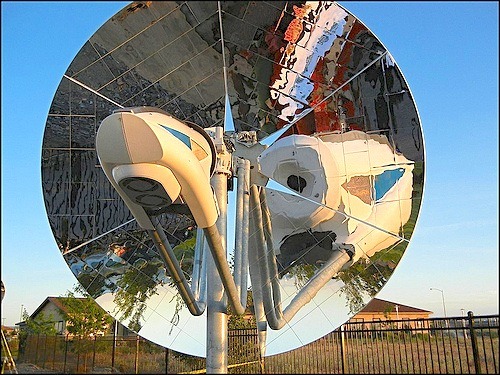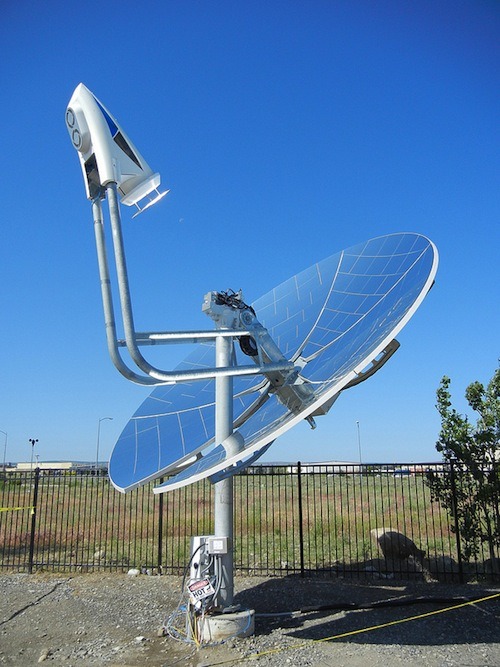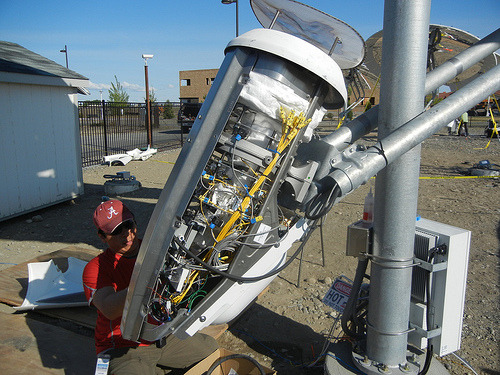This bridge technology can increase the fuel efficiency of NG fueled power plants by 20% on a sunny day!
Source: txchnologist.com
Publication date: April 12th 2013
By Michael Keller
Scientists Inject Sunlight Into Natural Gas For Bigger Bang

Government researchers have figured out how to add sunlight into natural gas to boost its potency.
Using a concentrating solar collector to inject the sun’s power into natural gas, Pacific Northwest National Laboratory (PNNL) scientists can now convert the standard fossil fuel into higher-energy syngas.
They say the system lets power plants use about 20 percent less energy when the sun is shining while producing the same amount of electricity.
“Our system will enable power plants to use less natural gas to produce the same amount of electricity they already make,” PNNL engineer Bob Wegeng, who is leading the project, said in a statement. “At the same time, the system lowers a power plant’s greenhouse gas emissions at a cost that’s competitive with traditional fossil fuel power.”

(PNNL’s concentrating solar power system for natural gas power plants, installed on a mirrored parabolic dish.)
A mirrored parabolic dish concentrates sun rays onto the system, composed of the collecting mirror, a chemical reactor and several heat exchangers. The solar energy heats natural gas in the reactor, which also contains a catalyst that converts the fuel into syngas with a higher energy content. Tests run on an early prototype of the system showed that 60 percent of the solar energy hitting its collecting mirror was converted into chemical energy in the form of syngas generation.
They next plan to run field tests on the device at PNNL’s Washington State campus.

(PNNL’s thermochemical conversion device is installed in front of a concentrating solar power dish. The device converts natural gas into the more energy-rich fuel syngas, which power plants can burn to use less fuel and reduce greenhouse gas emissions.)
All Images: Courtesy Pacific Northwest National Laboratory.
